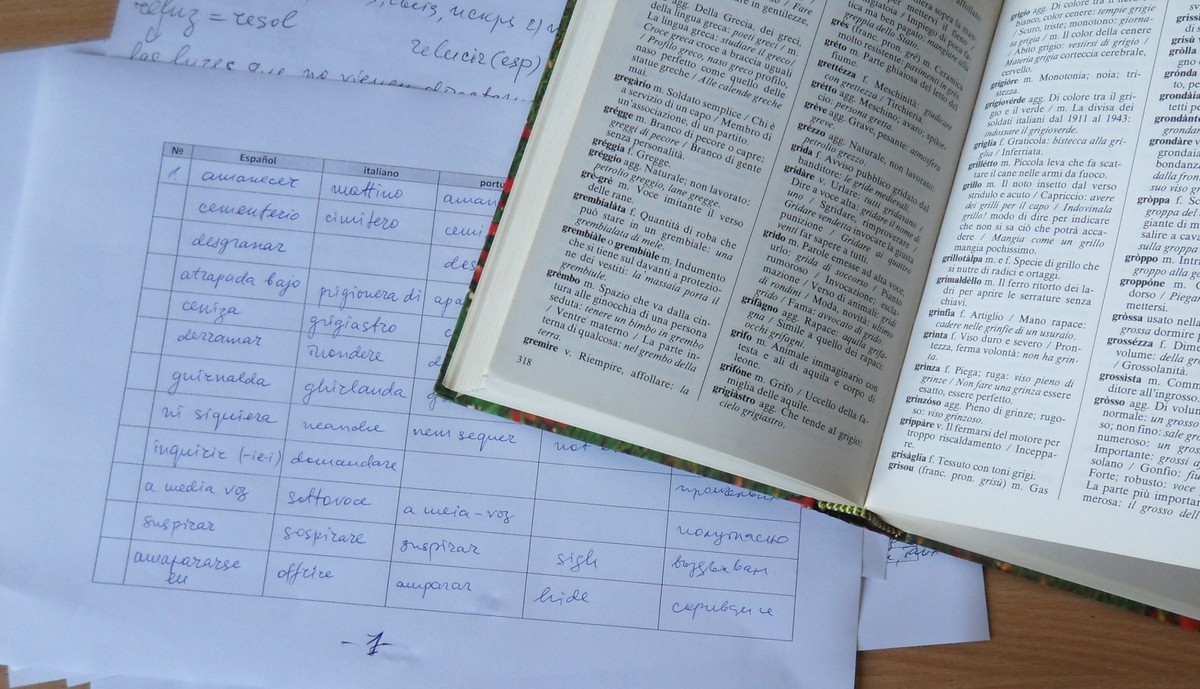
I decided to read this beautiful book in Spanish. Here is my approach.
First, I read the book in my native language – Bulgarian. I wanted to be sure that I would like the book and it would be interesting for me. I didn’t know anything about Carlos Ruiz Safón or about the book itself. Therefore, I was a little bit sceptic. However, the book really grabbed me and I read it very quickly. During the reading, I try to mention to myself words, phrases or whole passages that would be difficult to me. As a result, I realized that in the book there are many truly poetic descriptions of Barcelona (full with new words), many words, describing the manner of talking (like “whispering”, etc.). It would be challenging but useful for me to read this book in Spanish.
Second, I started to think about my approach. I was reading some books in foreign languages but very differently. Some books I read it without dictionary in English, just for fun. Some other books I read it in Kindle with its dictionaries. Other books I read them with searching for new words in dictionaries, making notes, etc. At the end, I decided a new approach – to try to read the book in all my targeted languages simultaneously. I was made something similar with my last book but I used paper copies and paper dictionaries. My notes were not in one place and there was no connection between words and phrases of my languages. It was not a real simultaneous reading but reading a chapter in Spanish, then reading another chapter in English, then reading this chapter in Bulgarian, etc. It was good for a book without a plot or many characters. Now I decided to make a table with 5 columns in Word – for each language – Spanish, Italian, English, Bulgarian and Portuguese. After fine-tuning, the text was synchronized and I started to read it, part by part, in Spanish, than same text in Italian (but now I reference Italians and Spanish words), etc. I marked new words, phrases, and interesting expressions with colours and add notes in comments (like in Journaly). In addition, I made a vocabulary list – a table with 5 columns – to add corresponding words in these languages. I preferred to make it in paper because I wanted to add notes in the back of each page for each language with different colour. I like to write a lot but maybe it would be better if I revise these notes and put them into a file. I search for new words and phrases in online dictionaries but I check also phrases in paper dictionaries. I also use DRAE, María Moliner and Zanichelli (Spanish-Italian).
In the end, I finished first chapter in Spanish and I have listed about 160 new words and phrases. Some of favourite words of the author are reluz, penumbra, ceniza, alba, tiniebla, sombre, arder. The most difficult parts of the text for me are the descriptions of the town in any language. For me is quite interesting to search for some literature words like “reluz”. It is a slow approach but for me is an essential. I try to notice differences of spelling like guirnalda (esp.), grinalda (port.) , ghirlanda (it.), гирлянда (бълг.) or cementerio (esp.), cemitério (port.), cimitero (it.), cemetery (eng.). In addition, I will try to extract some useful words, which will help me in further readings.
I hope my thoughts would be useful for someone!

Hi Nnavi! I really like your approach to reading books in another language. PS: There is a special topic for our book club: Multilingual book club 01. If you add this your post will be found more easily by other members of the book club.
Hello again, Ivan! Very interesting approach and good writing. Let me know if you have any questions.
Wow, this is going to be a huge project for you! I'm sure your comparison of the book in different languages will yield some really insightful results. I'm reading it too, but only in Spanish. It's a shame it hasn't been translated into Galego.
@nomadicvegan I search for version in Galego but can't find. @LindasLinguas Thank you for the help - I add the topic @CocoPop Thank you very much for your help and patience . I spent whole year trying to write a little in regular basis but in vain.
Здравейте Иван, благодаря за твоята публикацията. You are not lacking for ambitiousness! :-) I would love to see a couple of pictures of the tables and notes for your multi-lingual project. Also, where might you suggest buying Bulgarian-language novels online? Мерси, Сара
@CanadaMills Thank you very much for the good words. In fact I fight with romance languages last 8 years with different speed. Most of the time I think I am lost between them or in one of them. There are many sites of Bulgarian publishing houses for e-books like: Ciela /one of the biggest/ - https://ciela.com/e-knigi Audiobooks - https://www.storytel.com/bg/bg/?gclid=EAIaIQobChMIlYaynI-e7wIVBqWyCh0rlwY0EAAYASAAEgKIy_D_BwE Helikon - https://m.helikon.bg/ebooks/ and for free download on different genres - http://chitanka.info Because there are so many sites if you wish to see other sites you have to search in Google for "e-книги" or "електронни книги". Good luck!
Благодаря Иван (или "Иване"? I don't yet understand that aspect of grammar, sorry). I will check out the websites you listed. P.S. I like your expression "In fact I fight with romance languages last 8 years with different speed. Most of the time I think I am lost between them or in one of them." Humble and humorous! It cheerily reminds me of some of the expressions that my Bulgarian friends use. Cheers.
@CanadaMills Both "Иван" and "Иване" are correct. First one is more polite and official, and second one WAS more used - it is in Vocative case - the last remaining of case system in Bulgarian. Vocative is more used when you want to call someone like - "- Иване! Ела!". I found catalogues of contemporary Bulgarian writers. I have to say (or confess maybe) that I was read only Ostaynitsa by Rene Karabash (It is a fantastic book). I am not a fan of modern Bulgarian authors
http://ndk.bg/data/uploads/gallery/Catalogue%20CBW.pdf
http://ndk.bg/data/uploads/gallery/Contemporary%20Bulgarian%20Prose-web%202019.pdf